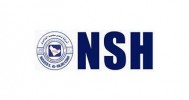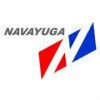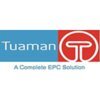Filter interviews by
Coastal Marine Construction & Engineering Civil Supervisor Interview Questions and Answers
Coastal Marine Construction & Engineering Civil Supervisor Interview Experiences
1 interview found
I applied via Company Website and was interviewed before Feb 2022. There were 4 interview rounds.

(4 Questions)
- Q1. About all site activities
- Q2. Pile work and civil work
- Q3. Working process and planing
- Q4. All site equipment checked
(9 Questions)
- Q1. Concrete quality and quantities
- Ans.
Concrete quality and quantities are crucial for successful construction projects.
The quality of concrete can be ensured by conducting regular tests on the materials used and the final product.
The quantity of concrete needed for a project can be calculated by taking into account the dimensions of the structure and the required strength of the concrete.
It is important to use the correct mix of materials to achieve the de...
- Q2. Steel and shutting checking
- Q3. All dimension checked
- Q4. Slump and cubes check
- Q5. Engineer and project manager handling
- Q6. Labour handling to all work
- Q7. Labour contractor handling
- Q8. All work checking before pouring
- Q9. All site document will be done before pouring
(3 Questions)
- Q1. Propper pile boaring
- Q2. Proper pile teme pouring
- Ans.
Proper pile teme pouring involves ensuring the concrete is of the right consistency and poured evenly into the pile shaft.
Ensure the concrete mix is of the right consistency and strength
Pour the concrete evenly into the pile shaft
Use a tremie pipe to pour the concrete to the bottom of the pile
Avoid overpouring or underpouring the concrete
Monitor the temperature of the concrete to prevent cracking
Ensure the concrete is
- Q3. Probably flashing and pouring
Interview Preparation Tips
Top trending discussions






Interview questions from similar companies

I applied via Referral and was interviewed before Dec 2023. There was 1 interview round.
Skills and experience bases.
Interview Preparation Tips
- AutoCAD Drawing

I applied via Campus Placement and was interviewed in Jun 2024. There were 2 interview rounds.
(3 Questions)
- Q1. What do you know about construction?
- Ans.
Construction involves the process of building or assembling infrastructure, such as buildings, roads, bridges, and more.
Construction involves planning, designing, and executing projects to build structures or infrastructure.
It includes activities such as site preparation, foundation work, framing, roofing, finishing, and more.
Construction projects require coordination of various trades, such as carpentry, plumbing, ele...
- Q2. Do you have experience in quality and safety management?
- Ans.
Yes, I have extensive experience in quality and safety management in civil construction projects.
Managed quality control processes to ensure compliance with project specifications and standards
Implemented safety protocols to prevent accidents and promote a safe work environment
Conducted regular inspections and audits to identify areas for improvement
Trained staff on quality and safety procedures to maintain high standa...
- Q3. What are the most important aspects of quality and safety throughout the entire duration of a project?
- Ans.
Key aspects of quality and safety in a project include planning, training, communication, monitoring, and continuous improvement.
Thorough planning at the beginning of the project to identify potential risks and establish safety protocols.
Providing adequate training to all personnel involved in the project to ensure they understand safety procedures and quality standards.
Maintaining open communication channels between t...
(3 Questions)
- Q1. Do you have any work experience in civil construction?
- Ans.
Yes, I have over 5 years of work experience in civil construction.
I have worked on various civil construction projects including building construction, road construction, and infrastructure development.
I have experience in supervising construction activities, ensuring compliance with safety regulations, and managing project timelines.
I have worked with a team of engineers, architects, and contractors to successfully co...
- Q2. What do you like most about civil construction activities?
- Ans.
I enjoy the process of turning architectural designs into tangible structures that benefit society.
Seeing a project come to life from start to finish
Working with a team to overcome challenges and solve problems
Contributing to the development of infrastructure that improves communities
Utilizing a variety of skills and techniques in construction
- Q3. How much time you will work for company
- Ans.
I am committed to working full-time for the company and dedicating my time and effort to ensure successful completion of projects.
I am willing to work the standard 40 hours per week, with potential for overtime as needed
I understand the importance of meeting project deadlines and will prioritize my work accordingly
I am open to discussing flexible work arrangements if necessary for project requirements
Interview Preparation Tips
- Civil Engineering

Civil Site Engineer Interview Questions & Answers
Sterling & Wilsonposted on 3 May 2019
I applied via Referral
Interview Questionnaire
1 Question
- Q1. Steel structure and billing contractor salary discussion
Interview Preparation Tips
Skills: Communication, Body Language, Problem Solving, Analytical Skills, Leadership, Presentation Skills, Time Management, Decision Making Skills

Civil Site Engineer Interview Questions & Answers
S P Singla Constructionsposted on 18 Aug 2021
Interview Questionnaire
1 Question
- Q1. Basic points of civil engineering and equipment knowledge

Interview Questionnaire
1 Question
- Q1. Solar renewable energy
Interview Preparation Tips

I applied via Company Website and was interviewed before Aug 2020. There were 3 interview rounds.
Interview Questionnaire
2 Questions
- Q1. What are the things to check before casting a tower foundation?
- Ans.
Before casting a tower foundation, several things need to be checked to ensure its stability and durability.
Check the soil condition and bearing capacity
Ensure proper reinforcement and formwork
Verify the dimensions and alignment of the foundation
Check for any obstructions or utilities in the excavation area
Ensure proper curing of the concrete
Verify compliance with local building codes and regulations
- Q2. How is trapezoidal foundation quantity calculated?
- Ans.
Trapezoidal foundation quantity is calculated by finding the average width and multiplying it by the length and depth.
Measure the length and depth of the foundation
Measure the width at both ends and find the average width
Multiply the average width by the length and depth to get the volume
Calculate the quantity by multiplying the volume with the unit weight of concrete
Interview Preparation Tips

Civil Site Engineer Interview Questions & Answers
B.L. Kashyap & Sonsposted on 28 Feb 2022

(1 Question)
- Q1. Technical and execution like structures
(1 Question)
- Q1. Share details of your previous job.
Interview Preparation Tips

(5 Questions)
- Q1. Minium diameter of bar used in column
- Ans.
Minimum diameter of bar used in column is determined by structural requirements and load calculations.
Minimum diameter is typically specified in the structural design drawings or calculations
Factors such as column height, load capacity, and seismic considerations influence the minimum bar diameter
Common minimum diameters for column bars range from 12mm to 25mm depending on the structural requirements
- Q2. Minium grade of concrete used in column
- Ans.
Minimum grade of concrete used in column is typically M20.
Minimum grade of concrete used in column is usually M20
Higher grades like M25, M30, M35, etc. can also be used for columns based on structural requirements
The grade of concrete is determined based on the strength required for the structure
- Q3. Minium thickness of slab
- Ans.
Minimum thickness of slab is determined based on factors like load, span, and material used.
Minimum thickness of slab is typically determined by structural engineers based on the expected loads and span of the slab.
Factors such as the material used for the slab and any additional reinforcement also play a role in determining the minimum thickness.
For example, a residential slab may have a minimum thickness of 4 inches,...
- Q4. What is water cement ratio
- Ans.
Water cement ratio is the ratio of the weight of water to the weight of cement used in a concrete mix.
Water cement ratio is a crucial factor in determining the strength and durability of concrete.
A lower water cement ratio results in stronger and more durable concrete.
The ideal water cement ratio varies depending on the type of concrete mix and its intended use.
For example, a typical water cement ratio for general purp
- Q5. Density of steel
- Ans.
The density of steel is approximately 7.85 g/cm^3.
The density of steel is commonly expressed in grams per cubic centimeter (g/cm^3).
The density of steel can vary slightly depending on the specific alloy and composition.
For example, the density of stainless steel is around 7.9 g/cm^3, while carbon steel is around 7.85 g/cm^3.
Interview Preparation Tips

I applied via Referral and was interviewed in Nov 2024. There was 1 interview round.
Previous all work experience
Coastal Marine Construction & Engineering Interview FAQs
Tell us how to improve this page.
Coastal Marine Construction & Engineering Interviews By Designations
- Coastal Marine Construction & Engineering Mechanical Engineer Interview Questions
- Coastal Marine Construction & Engineering Geotechnical Engineer Interview Questions
- Coastal Marine Construction & Engineering Laboratory Engineer Interview Questions
- Coastal Marine Construction & Engineering CAD Executive Interview Questions
- Coastal Marine Construction & Engineering Assistant Manager HSE Interview Questions
- Coastal Marine Construction & Engineering Civil Supervisor Interview Questions
- Coastal Marine Construction & Engineering Senior Executive Engineer Interview Questions
- Coastal Marine Construction & Engineering Store Keeper Interview Questions
- Show more
Interview Questions for Popular Designations
- Civil Site Engineer Interview Questions
- Civil Engineer Interview Questions
- Civil Site Supervisor Interview Questions
- Civil Foreman Interview Questions
- Junior Engineer Civil Interview Questions
- Senior Civil Engineer Interview Questions
- Diploma Civil Engineer Interview Questions
- Project Engineer - Civil Interview Questions
- Show more
Coastal Marine Construction & Engineering Civil Supervisor Interview Process
based on 1 interview
Interview experience
Interview Questions from Similar Companies

Coastal Marine Construction & Engineering Civil Supervisor Reviews and Ratings
based on 3 reviews
Rating in categories
|
Executive Accountant
22
salaries
| ₹2.2 L/yr - ₹3.7 L/yr |
|
Geotechnical Engineer
15
salaries
| ₹3.2 L/yr - ₹7.8 L/yr |
|
Assistant Manager
13
salaries
| ₹6 L/yr - ₹14.2 L/yr |
|
Site Engineer
11
salaries
| ₹2.8 L/yr - ₹4.8 L/yr |
|
Senior Engineer
9
salaries
| ₹6 L/yr - ₹8 L/yr |

Sterling & Wilson

Nasser S. Al Hajri Corporation

Navayuga Engineering Company

B.L. Kashyap & Sons
- Home >
- Interviews >
- Coastal Marine Construction & Engineering Interview Questions >
- Coastal Marine Construction & Engineering Civil Supervisor Interview Questions









